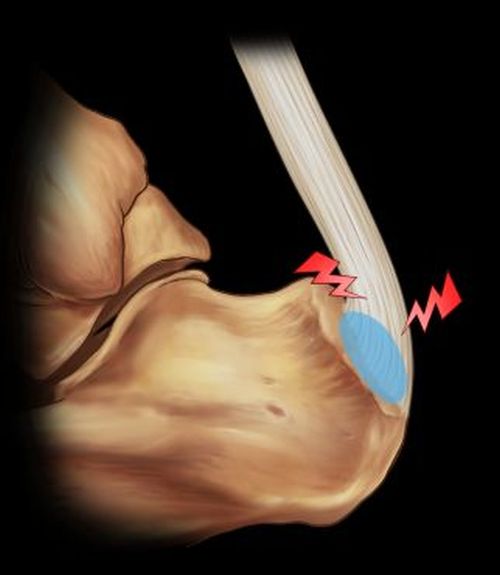Overview of Enthesis Damage and Repair
Introduction
The human skeleton is subject to on-going microfractures and microdamage. This is part of the normal wear and tear process. Whilst other mechanical devices including cars, washing machines and garden tools wear out within a decade, the human skeleton does not. In fact it lasts for around 8 decades in the average person. This durability is due to the fact that the skeleton repairs itself and is completely replaced once per decade. Given the high levels of mechanical stressing the numerous entheses and their bony anchorage points require on-going tissue repair responses.

|
| This cartoon shows that insertion sites are subject to lots of physical stress and microscopic injury. Therefore, these structures need to be constantly repaired. Image from Dr Sibel Aydin |
Mechanisms of Repair
The initial microdamage at the enthesis or the bone triggers a micro-inflammatory reaction at the site of injury.
The inflammation activates cells that are capable of removing damaged tissues. Macrophage cells, literally "big eaters" digest and remove soft tissues.
Bone which contains calcium and is a soft metal is removed by a specialised macrophage derived cell called an osteoclast. This makes acid to dissolve the damaged bone.
After the damage is removed the defect is then repaired with normal tissue. This is analogous to a dentist's drill removing decayed tooth tissue before inserting filler. In the normal skeleton the filler is new bone or cartilage or other enthesis related tissues.
Microscopic new blood vessel formation also appears to be key to these repair reactions.
Mechanism of Enthesis Disease subtly linked to normal repair
Normal day to day microscopic enthesis tissue repair is unlikely to be painful.
For a bigger injury to an enthesis, such as a sports injury or a knock, there may be pain and it may take 6 weeks to repair.
If the genes that control inflammation or new bone formation, or both, are abnormal this may lead to the normal repair reaction remaining persistently activated. In turn, this may trigger chronic inflammation in pre-disposed individuals. Hence, the difference between healthy repair and disease is subtle
Reference
A simple media article Your Body Is Younger Than You Think on age of body structures including the bones.